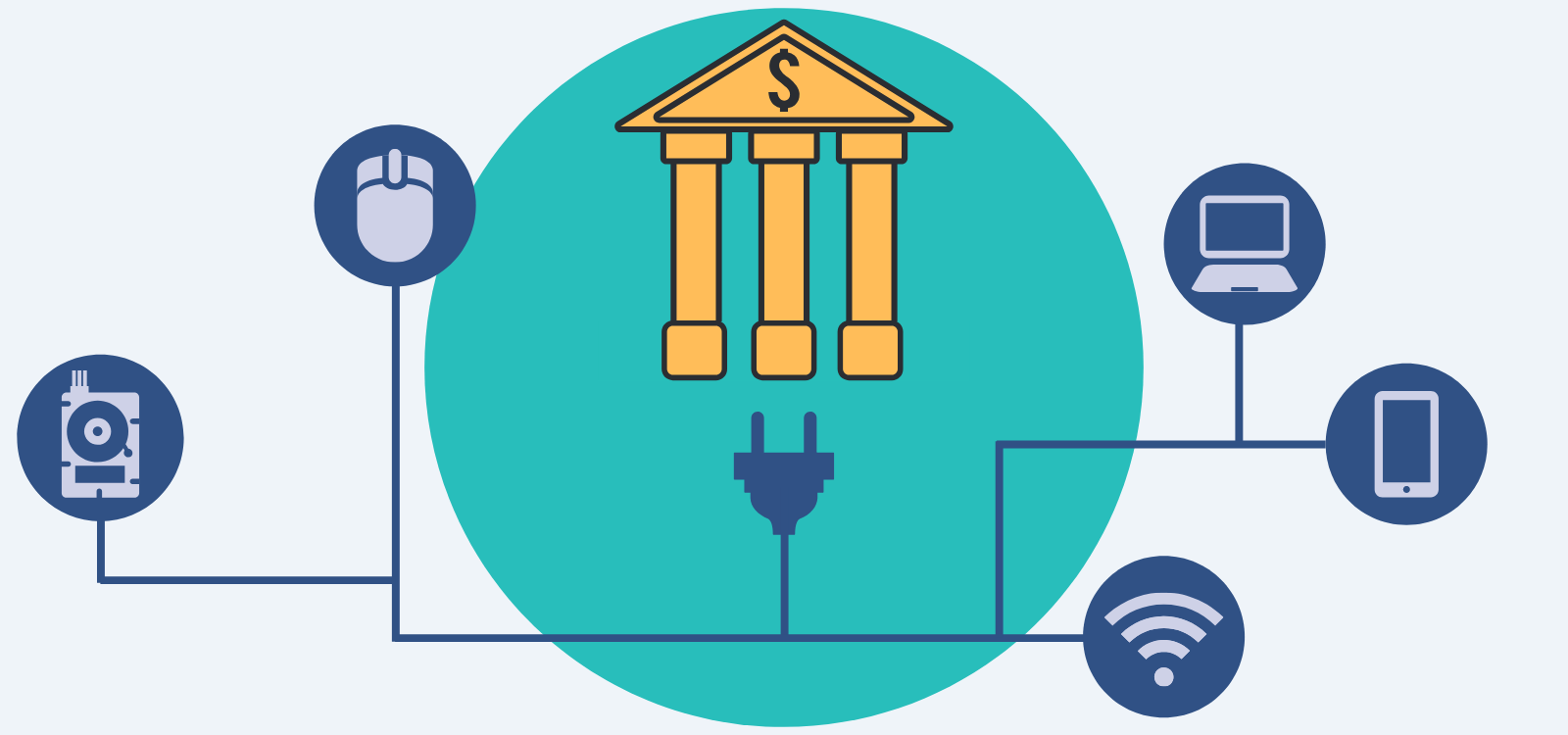If open banking lives up to its promise, it could revolutionize modern banking and simultaneously usher in waves of new regulation and compliance changes.
Digital disruption is burning through almost every sector of our modern economy, creating exciting new opportunities while also unleashing chaos on long-established ways of doing business.
Banking is one of digital disruption’s latest beneficiaries, and one specific trend has been causing a lot of buzz: open banking. It’s a topic that, if it lives up to its promise, could revolutionize modern banking and simultaneously usher in waves of new regulation.
In this brief primer we’ll break down what open banking is, why it’s making so much noise, and how technology can help solve the compliance challenges technology has created.
What is Open Banking?
Broadly, open banking is a banking practice that gives users the ability to grant third-party financial service providers access to their financial data.
The basics of open banking have been around for a few years now — the same principles can be found in budgeting tools like Mint or YNAB. But historically, apps like these have used a process known as “screen scraping” — where users give the budgeting app their bank username and password so the app can then “scrape” their financial information from the bank’s site. What is generating all the excitement around open banking now is the possibility to extract this information by instead using an API.
APIs (or, application programming interfaces) are a way for third-party providers to plug directly into an app or web service. So rather than giving Mint your bank username and password, you would instead grant it authorization to access your bank information, which Mint would then connect to directly through the API.
So why is an API so much more powerful than screen scraping?
Because for one, you don’t have to share your username and password with third parties, whose cybersecurity protocol might not be robust as your bank’s. Also with an API, if the username or password is changed, the connection isn’t broken. And the process is significantly more efficient for the third party, who now has direct information to the data they want, rather than having to scrape it from another source, reformat it, and then ingest it.
But open banking’s most exciting opportunities extend far beyond budgeting apps.
What open banking really allows for is a more efficient and secure way to share financial data.
When looked at from this perspective, the possibilities start to become industry-shaking opportunities. Here are just a few examples:
- The labor-heavy process of getting a loan, currently requiring the lendee to pass off reams of financial statements and information to a lender, who then has to ingest those materials, could become significantly easier for all parties involved. An API would allow lenders to have more efficient access to up-to-the-minute information with much less work from the lendee, and would allow lendees to only share the information relevant to the lender.
- Aggregation tools are already making money management a much simpler, more cohesive process. Existing solutions allow investors to get a truly holistic view of their investment portfolio, even if assets are custodied at different institutions. And emerging solutions are revolutionizing how investment advisors interact with custodians, how they analyze client data, and how they present to clients.
- The complicated payment system that exists today is also starting to be streamlined. APIs are now connecting developers with payment systems, and it could soon become possible to make payments directly out of a bank account rather than needing an acquirer to process payments via a credit card company. This would limit the number of times user data needs to be shared and reduce costs for both vendors and customers.
- Accounting solutions for both businesses and consumers are emerging that would make the process more efficient and less costly. Businesses will be able to benefit from bookkeeping applications that can plug directly into their payments feed and consumers could see a cheaper and easier tax-preparation process.
The great promise of open banking is that it liberates your data from being held solely at one financial institution in order to make it available to companies of your choosing. Ultimately, it will take some time before the benefits of this are truly understood and realized.
Regulating the Open Banking Revolution
As these benefits start to come to light, though, they will not be without risks. For example, direct access to user data, even if theoretically more secure than current practices, is an unsettling idea. And digital disruption within any industry can be chaotic, as rules and best practices become upended, outdated, and replaced. That’s why the open banking revolution is certain to be accompanied by new regulations designed to help protect consumers.
The European market already offers a preview of those regulations — and the challenges that come with them.
The second Payment Services Directive (PSD2) was rolled out in Europe by the Competition and Markets Authority as a way to spur more innovation and competition in the banking sector. In recognition of the opportunities presented by open banking, PSD2 required enterprise banks to make their data available in a secure, standardized form, so that third-party providers (TPPs) could plug into and leverage that data through APIs.
Banks were given until March 2019 to provide TPPs with a simulated bank environment where they could test their APIs before they became fully operational in September of that same year. And yet over 40% of the European banks missed the deadline.
This is just one example of how, even in the early days of open banking, a significant number of large banks are struggling to meet the demands of the associated regulations. As the effects of open banking are more widely felt, and as wider-reaching regulation accompanies them, the workload on banks and financial firms is sure to only increase.
New technology, though, can help solve the same problems that new technology has created.
RegTech: Open Banking’s Best Friend
Just as advances in technology are upending the banking industry, they’re also revolutionizing the world of regulatory compliance. RegTech (Regulatory Technology) companies are leveraging machine learning, natural language processing, blockchain, AI, and more to solve the problems of regulatory compliance.
RegTech solutions will be crucial both to new open banking companies looking to quickly get off the ground and to traditional, large banks implementing new solutions to stay competitive in a changing environment. AI-powered regulatory change management solutions can help automate the burdensome tasks of regulatory research and analysis, so banks and financial firms can stay up to date on all regulatory updates — related to open banking and otherwise. And obligations management tools can automatically deliver up a complete obligations register, reducing to mere minutes a task that can take thousands of hours.
Ultimately, the wide variety of RegTech solutions currently available will allow banks and financial firms to stay ahead of the waves of regulation by quickly and efficiently building a RegTech stack specific to their needs.
READ ARTICLE: How Ascent Simplifies Regulatory Change Management with Automation
The digital disruption revolutionizing the financial services industry isn’t going to subside anytime soon. And banks and financial services firms can leverage RegTech solutions to help make this fast-paced change work for them.
LEARN MORE: Click here to learn about Ascent Solutions







